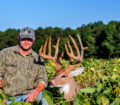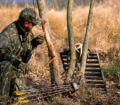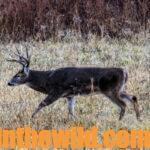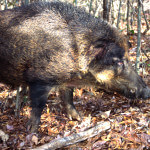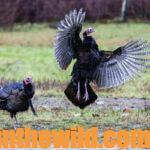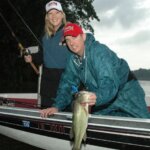John’s Note: To take one mature whitetail buck from public hunting lands is a major accomplishment. But to consistently take older-age-class bucks on public lands in several states year after year, you must have an extraordinary game plan. To take a buck with a composite score of 179 (the composite score uses the Boone and Crockett scoring system which includes the number of inches between the main beams), and an official Buckmaster score of 163 (this score does not include the number of inches between the main beams and only scores the amount of antlers that the deer carries) is a super accomplishment, making Jacob Lamar of Athens, Alabama’s Kentucky buck a buck of a lifetime. In the last 11 years while hunting public land in Illinois, Jacob has taken nine older-age-class bucks. In 2015, he harvested this buck in Kentucky that scored 179 points. He took two bucks in Tennessee off the same 70 acres – one scoring 138-inches and a second buck scoring 157-4/8-inches. I wanted to know what hunting tactics Jacob had developed to take these big deer on public-hunting lands.
 In the Shawnee National Forest in Illinois where my brother Adam and I and our friends have hunted for many years on public lands, we’ll often scout for swampy areas. Swamps will prevent about 95 percent of the people who hunt public land from scouting them to see if any deer movement is there. We scout a swamp by waiting until the area has had a drought and only go into the swamp when the water is shallow. We look for places that will be out of the water during the fall and winter when rains flood the swamps. Then when hunting season arrives, we put on chest-high waders and go back to the places in the swamp that we know are out of the water and that have had a lot of deer sign before the water has come up. In many instances, we’ve found that there’s a lot of swamp land on public-hunting areas, and we’ve never seen anyone else scouting swamps in July and August when the water is down.
In the Shawnee National Forest in Illinois where my brother Adam and I and our friends have hunted for many years on public lands, we’ll often scout for swampy areas. Swamps will prevent about 95 percent of the people who hunt public land from scouting them to see if any deer movement is there. We scout a swamp by waiting until the area has had a drought and only go into the swamp when the water is shallow. We look for places that will be out of the water during the fall and winter when rains flood the swamps. Then when hunting season arrives, we put on chest-high waders and go back to the places in the swamp that we know are out of the water and that have had a lot of deer sign before the water has come up. In many instances, we’ve found that there’s a lot of swamp land on public-hunting areas, and we’ve never seen anyone else scouting swamps in July and August when the water is down.
When we’re scouting swamps in Illinois, we usually won’t hunt these areas until November. We also put out trail cameras on public lands at least 2-3 months before the first day of archery season. But we’ve put our cameras in swampy areas before and had the water come up over the cameras and ruin them.
I’ve often been asked, “Have you ever had any cameras stolen?” My answer is, “If someone is willing to wade into a swamp, climb up a mountain or go as far back in the woods as I do to put that camera out, if they find that camera and need it bad enough to carry it back through that rough terrain, they need that camera far more than I do.” Also, we use very-inexpensive trail cameras that cost $40-$60. We don’t need to see bucks in living color. We just use the cameras to get pictures of bucks by day and by night, 24/7. Usually, we won’t check our trail cameras but about every 2-3 weeks until we get closer to the beginning of archery season.
 Don’t forget that we’re putting our cameras out in places that are very difficult to get to, even if a public-land hunter thinks a big buck may be there. Most hunters won’t make the effort that we do to get to those regions. Seldom will they scout and put out cameras when the weather is so hot, and the insects are so bad that no one really wants to scout for deer.
Don’t forget that we’re putting our cameras out in places that are very difficult to get to, even if a public-land hunter thinks a big buck may be there. Most hunters won’t make the effort that we do to get to those regions. Seldom will they scout and put out cameras when the weather is so hot, and the insects are so bad that no one really wants to scout for deer.
To get John E. Phillips’ eBooks and print books on hunting deer, including his newest deer-hunting book, “Whitetail Deer and the Hunters Who Take Big Bucks,” available at http://amzn.to/2bYwYOK/, click on these books to learn more, “How to Hunt and Take Big Buck Deer on Small Properties,” “How to Hunt Deer Up Close: With Bows, Rifles, Muzzleloaders and Crossbows,” “PhD Whitetails: How to Hunt and Take the Smartest Deer on Any Property,” “How to Take Monster Bucks,” “How to Hunt Deer Like a Pro,” and “Bowhunting Deer: Mossy Oak Pros Know Bucks and Bows,” or to prepare venison, “Deer & Fixings.” Or, go to www.amazon.com/kindle-ebooks, type in the name of the book, and download it to your Kindle, and/or download a Kindle app for your iPad, SmartPhone or computer. You also can find John’s books on Nook at www.barnesandnoble.com.
For free information on making jerky from your deer to provide a protein-rich snack, you can download a free book from https://johninthewild.com/free-books.

